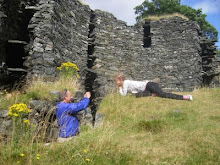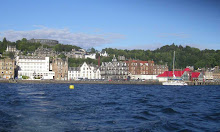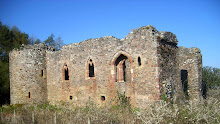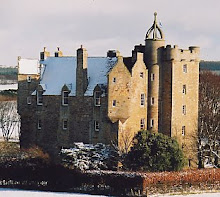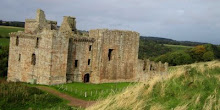Leaving Strathconon
We're the emigrant ones, not the last in the line
You're your father's son, and I am mine.
And all of our northwords turn distant and small
In the end they mean nothing. No, nothing at all.
Right here's the river's source, and it flows out to the world
And the heart of Caledonia is drowning in its flood.
Was there hunger in our striving, did the light shine in our dark
Was everything we ever needed always right here from the start?
After the raging flame, the embers burn slow
We're leaving. leaving. leaving, till there's nowhere left to go.
The seas, the slums, the battlefields. The shipyards and the tides
The straths, the glens, the drove roads. All the prairies and the mines.
It's a still autumn morning, and it covers Loch Meig
And all the trees across the valley in a blaze of dying green.
I've seen too many tail-lights, didn't need to say goodbye
We're just souls across a shrinking world in a distant starlit night.
Please believe me
Something in me died
Leaving Strathconon
And your father's home behind.
Which brings me, with no great enthusiasm, to the 'Highland Clearances'...
Over 150,000 Highlanders were forced off their land between 1783 and 1881. The orders came largely from their clan chiefs and were implemented by estate managers known as factors. For hundreds of years Highlanders had looked to their chiefs for leadership, justice, security, protection. But in the eighteenth century, and particularly after the defeat at Culloden, many chiefs subtly became landlords and their principal motivation shifted from duty to the clan to maximising profit. Highlanders, albeit ready to die for their chief, produced no financial return with their few cattle and subsistence farming. But the price of wool and mutton was soaring, and shepherds from the south were ready to manage profitable sheep for landlords.
For the Highlanders it was clan land to which they had an inalienable and ancient right. For the factor it was the laird's land with too many tenants who could not pay their rents. If they didn't leave when told to do so, their thatched houses were simply burnt and the sheep arrived. There was no one to whom they could appeal.
Some would say that, especially following the potato famine of 1846, life in the glens was unsustainable and those who left were better off than those who stayed. Descendants of the 'emigrant ones' may be reading this from affluent homes in North America. But those were the ones that found a passage - and survived it.
Strathconon was Mackenzie country; their chief was the Earl of Seaforth, whose factor James Gillanders cleared 400 people from Strathconon in 1840. It was not one of the most infamous clearances; just a harsh fact - and a good song.















































